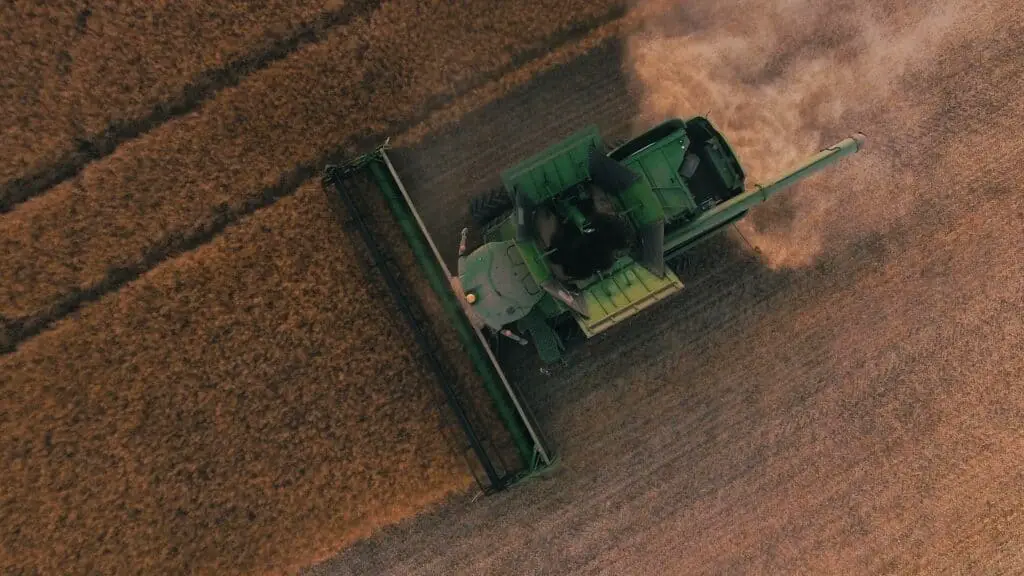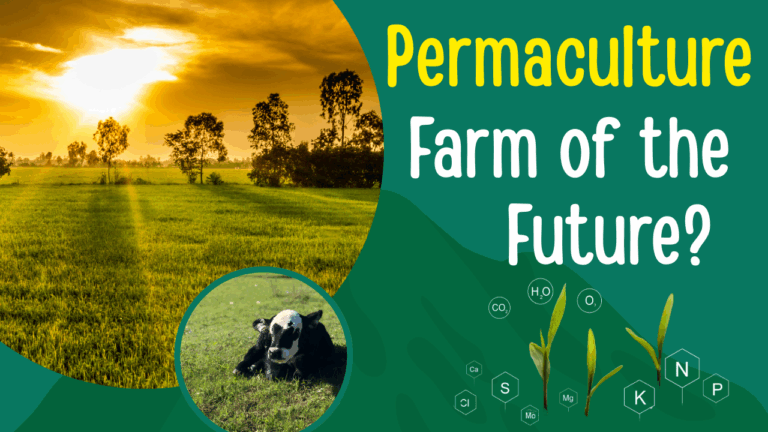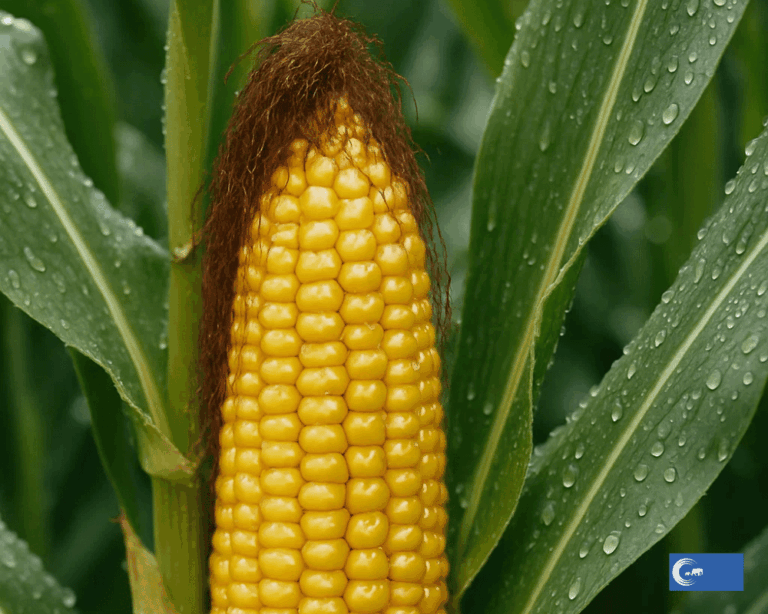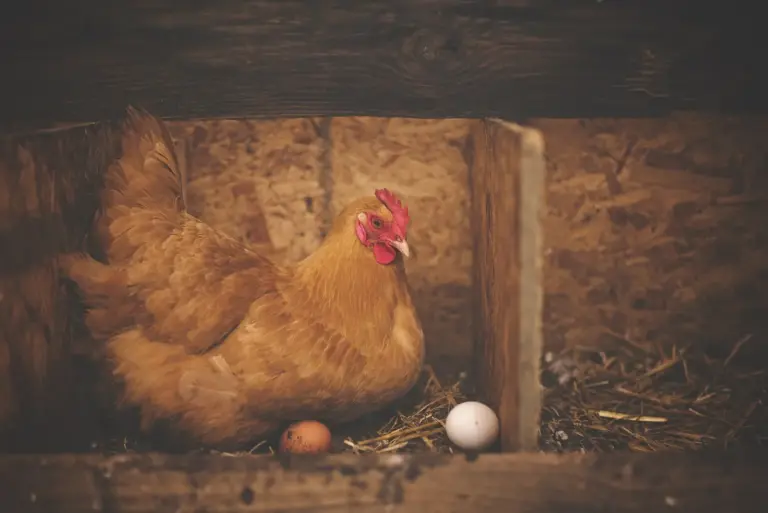Industrialised farming is the modern, high-output form of agriculture characterised by large-scale mechanisation, intensive use of synthetic inputs, and advanced technologies to maximise yields.
Unlike traditional farming, which relied on local methods and diverse crops, industrial systems utilise powerful machinery, including tractors and combine harvesters, as well as synthetic fertilisers and pesticides, and even biotechnological tools such as hybrid and genetically modified seeds.
This form of farming is of great importance in today’s world. As the global population steadily climbs past eight billion, the demand for affordable and abundant food has never been higher. Industrial systems produce high volumes of staple crops and animal products at low unit costs, enabling significant economies of scale and supporting global food security.
Such farming methods have been pivotal in preventing famine in many regions, although they also raise pressing questions about environmental sustainability and long‑term viability.
Main Takeaways
- High Productivity: Industrialised farming enables large-scale, cost-effective food production, supporting global food security.
- Technological Advancement: It relies on machinery, synthetic inputs, and biotechnology to maximise yields.
- Economic Benefits: Economies of scale reduce costs and food prices, benefiting both producers and consumers.
- Environmental Concerns: Intensive farming contributes to pollution, biodiversity loss, soil degradation, and climate change.
- Health & Social Impacts: Processed food diets, antimicrobial resistance, and rural displacement raise serious health and social issues.
- Sustainable Solutions: Precision agriculture, regenerative practices, and alternative systems (e.g., organic, vertical farming) offer more sustainable paths.
- Policy & Reform Needed: Shifting subsidies, supporting smallholders, and encouraging sustainable practices are crucial for a resilient food future.

Historical Context & Development
The roots of industrialised farming can be traced back to the twin forces of the Industrial and Green Revolutions. The Industrial Revolution, in the late 18th and early 19th centuries, ushered in mechanisation and marked the transition from human and animal labour to fossil-fuel-powered machines. It laid the foundation for farms to expand beyond local horizons. The later Green Revolution of the mid-20th century marked a significant leap forward, combining scientific insights with mass agricultural practices. Innovations included the development of synthetic nitrogen–phosphorus–potassium fertilisers, widespread irrigation schemes, the use of pesticides, and, most importantly, the breeding of high-yielding varieties of wheat, rice, and maise.
Following World War II, the field of pesticide chemistry experienced significant acceleration. Compounds originally developed for military use were repurposed to control pests in agriculture, becoming staples of large-scale production systems that prioritised maximum output over ecological diversity.
Today, industrial farms operate under corporate models. Land ownership and decision‑making have increasingly concentrated among large agribusinesses, displacing small family farms in many regions. This consolidation has strengthened economies of scale yet also raised concerns around rural communities, local food sovereignty, and environmental resilience.
Photo By Bernd
The benefit of industrialised farming
Modern agriculture extensively uses technologies to maximise crop yields and increase livestock rearing and animal production. It utilises synthetic fertilisers, chemicals, and other methods to strengthen crops and meet the feeding requirements of a constantly growing world population.
In livestock farming, antibiotics, and vaccines have reduced diseases and improved animal health. Developments in shipping networks and technology have made the long-distance distribution of agricultural produce feasible.
Economic & Social Advantages
Industrialised farming delivers striking economic benefits through economies of scale, a concept where expanding production lowers the cost per unit. As farms grow larger, they can deploy machinery, labour, and resources more efficiently—making each tonne of crop or litre of milk cheaper to produce. Large equipment can run longer without interruption, allowing staff to specialise in precise tasks and enhance overall productivity. This efficiency translates into lower prices for consumers and greater food affordability, while farmers benefit from cost-effective operations.
Beyond economic metrics, heightened agricultural productivity plays a transcendental role in boosting food security. With more food produced on each hectare, nations can alleviate hunger and poverty, especially in low- and middle-income countries. Lower food prices increase household purchasing power, helping families overcome food insecurity and stabilising communities. As productivity improves, rural economies experience further positive spillovers: workers find more stable employment, incomes grow, and local industries—such as processing and transport—thrive.
A less obvious but vital impact is the ripple effect of innovation. The need to maintain efficiency at scale has triggered investment in agri-tech, from drones and sensors to robotic harvesters and AI-based crop management. These technologies create high-skilled job opportunities and elevate entire supply chains, ushering in a new era of sustainable farming that blends labour, capital, and knowledge.

The drawback of industrialised farming
There are now concerns about the sustainability of modern industrial agriculture.
The use of large amounts of fertilisers containing nitrogen, potassium, and phosphorus, as well as the extensive application of herbicides, pesticides, and other chemical products, along with the increased use of fossil fuels, which cause pollution, is prompting us to rethink how we produce food.
1. It can be expensive
There are both direct and indirect costs associated with intensive farming. Direct costs are mostly related to energy and land usage. However, there are also indirect costs associated with the intervention required to address the polluting consequences of this farming system. The indirect health costs and effects of a diet often based on ultra-processed and unhealthy food must also be mentioned.
2. Intensive livestock rearing can increase the risk of spreading diseases from animals to humans (so-called zoonosis)
The risk of high stress and poor hygiene is high in intensive livestock-rearing systems. Stress factors can be critical in lowering the immune system, making animals more vulnerable to disease and susceptible to spreading pathogens.
Slurry, manure, and other animal by-products can be critical in spreading pathogens, and animal waste management is costly and complex.
3. Antimicrobial resistance
Abuse and misuse of antibiotics can potentially lead to antibiotic resistance. Antibiotic resistance refers to the risk that some antibiotics may become ineffective against certain bacteria.
Intensive livestock farming can pose a significant risk for developing and spreading antimicrobial resistance (AMR). Intensive farming practices often involve the routine use of antibiotics and other antimicrobials to prevent disease.
When these resistant bacteria spread to humans, they can cause infections that are difficult or impossible to treat with commonly used antibiotics, leading to increased morbidity and mortality.
4. Water and soil pollution
Agricultural water pollution is a global problem that stems from the use of fertilisers, pesticides, and other agricultural inputs, such as manure and some feeding operations. These pollutants can enter surface and groundwater systems, causing environmental damage. In addition to impacting water resources, agricultural water pollution poses a health hazard to humans who drink or come into contact with contaminated water.
5. Air pollution
Air pollution from agriculture has been a growing problem in the United States. In 2013, agriculture was estimated to be responsible for 28% of all U.S. air pollution. Agricultural production is a significant source of emissions from vehicles, factories, and other sources. The Environmental Protection Agency (EPA) has identified three primary types of air pollution associated with agriculture: ground-level ozone, particulate matter, and methane.
6. Human health is reduced due to processed food consumption
Most of the food we produce today is inexpensive and high in calories, and processed, and ultra-processed foods make up the majority of our meals. Although high calories allow for fighting world hunger, it also creates a diet that is high risk for diseases like diabetes, heart disease, and other diseases preventable with a correct diet.
7. Loss of biodiversity
Agricultural production has a significant impact on biodiversity. Many plant and animal species are lost from farmland each year as farmers implement new technologies and crops that can damage or displace native plants. The loss of biodiversity can have a profoundly negative impact on both the environment and human health. The loss of critical species can lead to a decline in ecosystem services that humans rely on, such as food production or clean air.
8. Loss of quality soil
Agricultural practices can have significant impacts on soil quality. Soil loss from farm activities, such as erosion and compaction, can reduce the available nutrients and water resources for plants and other organisms. Additionally, pesticides and other chemicals used in agriculture can contaminate soil and water supplies, contributing to environmental degradation.
9. Reduce the quality of life for people in agriculture
In the modern world, especially in developed countries, there is a constant trend where small farms are disappearing and being replaced by larger, more intensive units. People losing their farms can suffer mental health consequences and loss of income from their businesses.
The health conditions of farm workers and the surrounding local communities near industrial farms are constantly monitored for potential health hazards. Increased acute and chronic lung disease, musculoskeletal injuries, and infections transmitted from animals to humans are potential threats that must not be underestimated.
10. Animal health and welfare
There is vast debate about intensive animal farming and its impact on animal welfare. The welfare of animals reared for food production is constantly under scrutiny; legislation and regulations are enforced to ensure high standards of care.
However, it is crucial to continually monitor animal welfare, identify stress factors, and implement effective management strategies to mitigate stress and enhance the quality of life for animals.
11. Loss of water
Agriculture has a substantial water footprint, utilising over half of the world’s freshwater. The main culprits are irrigation, which accounts for more than 80% of all water used in agriculture, and livestock production, which consumes almost two-thirds of water use.
12. Land erosion
Agriculture is the leading cause of land erosion in the United States. Over half of the country’s land loss is attributed to agriculture, according to the U.S. Department of Agriculture (USDA). This erosion can have severe consequences for both humans and the natural environment. It can isolate communities, deprive ecosystems of vital nutrients, and damage valuable infrastructure. The USDA has developed strategies to mitigate the impact of agriculture on land, but further efforts are needed.
13. Wildlife and aquatic species loss
Wildlife loss due to agriculture is a significant global issue that affects numerous species. Agricultural practices, such as deforestation and the use of pesticides, can cause the death of wildlife, including birds, mammals, and amphibians. The damage can be caused by direct contact with chemicals or indirect effects such as climate change. There are many ways to prevent wildlife loss from agricultural practices and to help restore affected areas.
14. Deforestation
According to the Food and Agriculture Organization of the United Nations, the world has lost approximately 420 million hectares of forest since 1990.
The Amazon rainforest has been depleted over the past 50 years; these losses are primarily accountable to soy plantations. Palm oil production and livestock grazing also contribute to deforestation.
15. Climate change
Modern intensive agriculture relies on fossil fuels for tillage, transportation, and the production of fertilisers and pesticides—the highly mechanised equipment used as agricultural inputs, as well as the generation of electricity used on farms, also requires fossil fuels.
Livestock rearing is at a tipping point for the production of greenhouse
gases; the farming world cannot rely on perpetual livestock growth to sustain food production; otherwise, we will be unable to control methane in the atmosphere.
Technological Innovation & Mitigation Strategies
Precision agriculture represents a significant leap in how we grow food, utilising real-time data to inform every decision. Imagine drones mapping crop health from above, detecting early signs of stress that the naked eye might miss. These drones, often equipped with multispectral sensors, are guided by artificial intelligence to analyse plant conditions and inform when and where to apply water, nutrients, or pesticides—drastically reducing waste and environmental impact.
In parallel, ground-level Internet of Things sensors monitor soil moisture, nutrient levels, and even pest pressures on a minute-by-minute basis. These devices feed machine-learning algorithms that can predict disease outbreaks or drought stress before they occur, enabling farmers to intervene only when necessary. This marriage of AI, IoT, drones, robotics, and cloud networks—sometimes referred to as the “Internet of Everything” in agriculture—brings data-driven precision to farm fields, conserving resources and minimising environmental harm.
Alongside high-tech solutions, many farmers are embracing integrated and regenerative practices to heal the land. Crop rotation, the practice of changing what is planted in each field every season, helps control pests, restore nutrient balance, and naturally build soil structure. No-till farming—planting without ploughing—helps preserve soil structure, sequester carbon, and reduce erosion; ideally, this is paired with cover crops to maximise soil health and ecosystem resilience.
Integrated Pest Management utilises natural predators, biological controls, and targeted interventions rather than relying on widespread chemical use, which helps sustain biodiversity and minimise chemical runoff. Recent science shows that when these methods are combined adaptively—taking into account local context and needs—they can profoundly mitigate industrial agriculture’s ecological footprint while retaining productivity.
Alternatives & Future Directions
Looking to the future, alternatives to traditional industrial models are becoming more mainstream. Organic, agroecological, and regenerative systems emphasise soil health, biodiversity, and natural cycles. While they often require more labour and can produce lower yields per acre, these systems have shown strength under stress, outperforming conventional farms during droughts or pest outbreaks by maintaining healthier soils and ecosystems. Nutrient-rich soil and lower chemical use not only benefit the environment but also support healthier food production and long-term farm sustainability.
Emerging technologies, such as vertical farming, hydroponics, and aquaponics, offer further promise. These controlled environment systems enable crops (and sometimes fish) to be grown indoors under tightly managed conditions. Vertical farming stacks layers of crops to maximise space, minimise water use, and remove the need for pesticides—all within urban settings close to consumers.
Although energy use is high, ongoing improvements suggest that it is viable as part of a diversified food system.
Finally, policy plays a pivotal role. Governments can shift subsidies away from practices that harm the environment and toward methods that promote sustainability and soil health.
Encouraging corporate responsibility within agribusiness, along with empowering smallholders through fair markets and technical support, creates more resilient and equitable food systems. While institutional and economic changes may not occur overnight, aligning financial incentives with sustainable practices is crucial to ensuring that farms can thrive without depleting natural resources.
Conclusion
Industrialised farming has undeniably transformed global food production, enabling humanity to meet the demands of a rapidly growing population with unprecedented efficiency and scale. It has played a vital role in reducing hunger, improving food affordability, and driving technological innovation in agriculture. However, these advances have come at a steep environmental and social cost—from pollution, biodiversity loss, and climate change to the degradation of rural livelihoods and concerns for human health.
The challenge moving forward is not to abandon industrial agriculture entirely but to reform it. Integrating precision technologies, regenerative practices, and sustainable resource management can help reduce its ecological footprint while maintaining productivity. At the same time, promoting alternative models such as organic, agroecological, and vertical farming offers viable pathways to a more balanced and resilient food system.
Ultimately, the future of farming must be rooted in a holistic vision—one that values not only yields and profits but also ecosystem health, animal welfare, farmer wellbeing, and long-term food security. Through responsible policy, corporate accountability, and continued innovation, it is possible to cultivate an agricultural system that sustains the world without depleting its resources.



